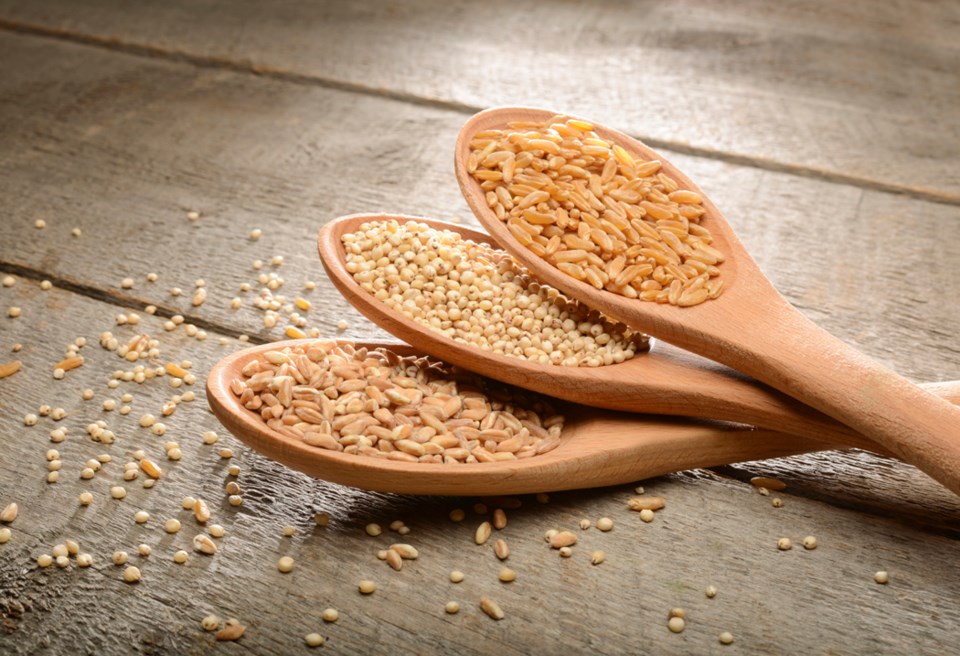There has been a loud buzz about whole grains for a while now, especially ancient grains. Which is hilarious, because just like the name suggests, they have been around for thousands of years. In fact before it became mainstream to us, these “newcomers” to the foodie world were being served up prehistorically and in other countries around the world. But I guess it’s only when we adapt it to our western diet that it becomes mainstream and “new.”
Whole grains are intact, ground or flaked and should be the grains you choose to incorporate into your diet. Most people only know some of the staples, such as oat, wheat, rice, barley and corn. But it's a great time to expand your culinary repertoire by adding some history into your diet. Enter ancient grains, which are full of trace minerals, protein and nutrients.
Adding these types of grains into your diet will help ensure that you and your family are getting nourished in a really practical, delicious way. They are high in fibre, B vitamins, and can help you lower cholesterol and blood pressure. They help you feel full longer, so if losing weight is your goal, then eating whole grains is your game. They are also known to be great at balancing blood sugar, not to mention they taste great and can easily be incorporated in many types of dishes.
To learn a little more about our ancient friends, we must go back. Like the name clearly states, they are ancient, which means they have been around for a long time. So long, in fact, that they were used as offerings to numerous gods around the globe. Spelt was offered to the gods by the Greeks and Romans, chia seeds by the Aztecs, and apparently farro is mentioned in the Old Testament.
The foodies will be praised in history for bringing these old staples back to life. There are so many different types and they all are unique and have many health benefits.
Amarath
According to Rebecca Wood in her book the New Whole Foods Encyclopedia, the United Nation’s Food and Agriculture Organization has promoted amaranth since 1967 because areas that consume large amounts of the “pseudograin” tend to have very little malnutrition. This native plant to Peru is now grown all over South America, Africa, India and Russia. Amarath gets around. It’s higher in minerals than most veggies and one cup provides over half your daily protein needs and is super high source of magnesium. No wonder everyone wants a piece of it.
Quinoa
Makes up a complete protein making it a popular staple in the vegan/vegetarian population. It's also versatile and delicious. Related to Swiss chard (yes, that’s correct) this distant cousin hails from South America and was often referred to as “gold of the Incas” because its high protein value gave them strength. This grain has grown so high in popularity that the UN declared 2013 the International Year of Quinoa (we humans look for any reason to celebrate literally anything). Not only is it delicious, but it’s also high in manganese and copper.
Buckwheat
These little grains are packed with a pretty decent amount of fibre, protein, vitamins and minerals (such as magnesium, copper and iron). It can help with blood sugar balance and cardiovascular health, among many others. Buckwheat fun facts: their hulls are used for hypoallergenic pillow stuffing, it’s gluten-free and because it grows quickly, it generally doesn’t require chemicals to grow.
Quinoa Salad
Ingredients:
2 cups cooked quinoa (cooled down)
2-3 shredded carrots
½ shredded beet
5 chopped sundried tomatoes
1½ cups of chickpeas
½-1 cucumber, chopped
2 radishes, shredded or chopped finely
½ cup of sauerkraut
½ cup olive oil
1 cup of apple cider vinegar
1 sprig of fresh thyme
Himalayan salt and pepper to taste
Directions:
Mix all ingredients in a bowl and let sit for 20 min before serving. Goes great in a wrap or as a side dish to any meal.




